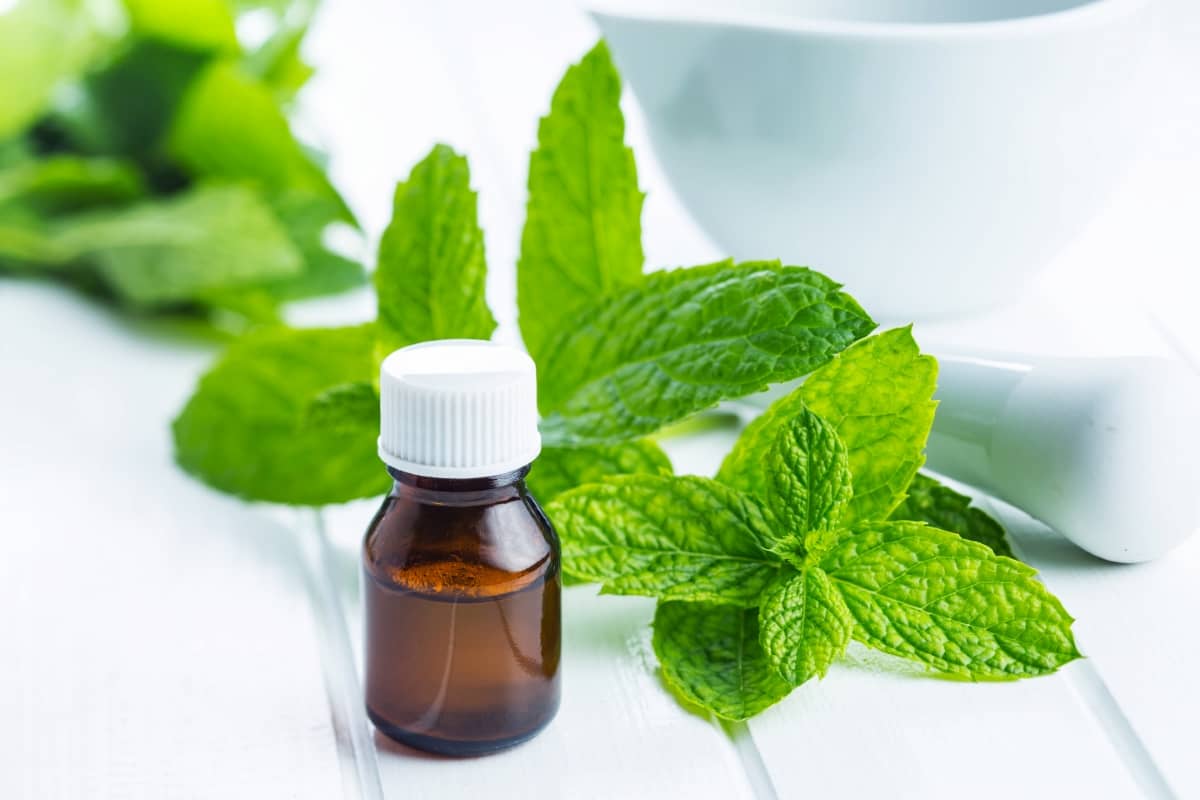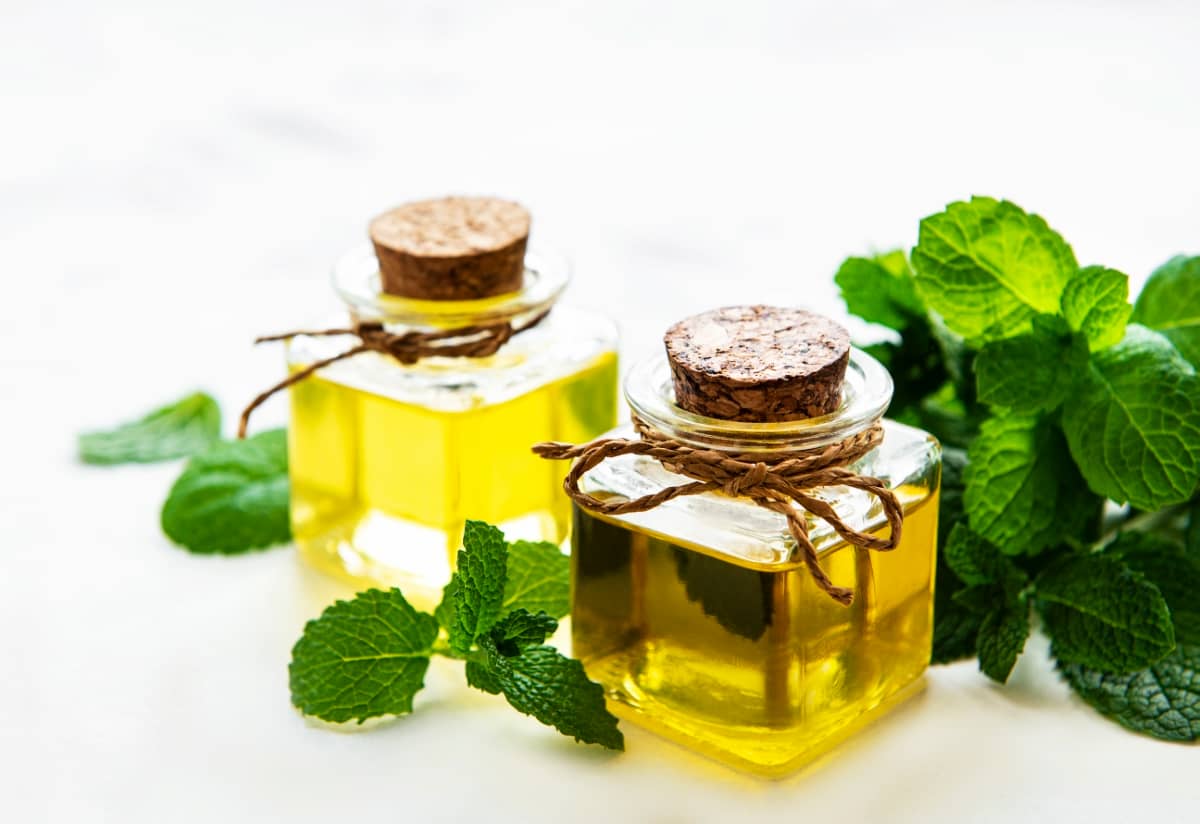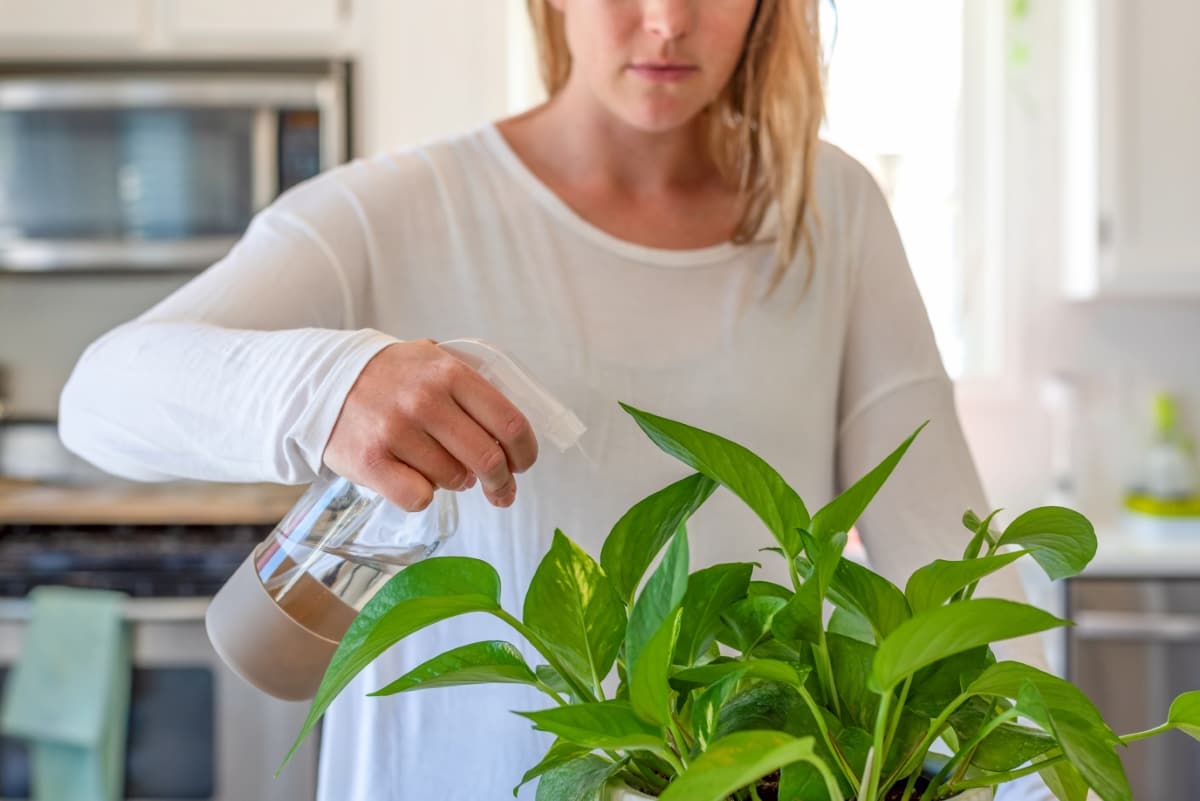Mint oil serves as a potent natural pest control solution for houseplants. Its strong aromatic properties act as a deterrent for common pests like spiders, ants, and aphids. The refreshing scent not only keeps pests at bay but also adds a pleasant fragrance to your indoor space. Regular application, especially around potential entry points, helps maintain a pest-free environment without resorting to harsh chemicals, making it an eco-friendly and effective choice for plant enthusiasts.

DIY Mint Oil Spray for Houseplant Pests
Step-By-Step Guide to Making Mint Oil Spray for Houseplants
- Collect essentials such as fresh mint leaves or mint essential oil, a spray bottle, liquid dish soap, and water.
- If using fresh mint leaves, finely chop a handful and place them in a bowl. Pour boiling water on the leaves and let it steep until cool, then strain to obtain mint-infused water. Alternatively, skip this step if using mint essential oil.
- In the spray bottle, combine 1-2 cups of water with a few drops of dish soap liquid to enhance the mixture’s adherence. If using mint leaves, add the mint-infused water. If using mint essential oil, add 10-15 drops.
- Seal the spray bottle and shake it thoroughly to ensure proper mixing of the ingredients.
- Generously spray the solution on both sides of the houseplant leaves and the surrounding soil. Pay extra attention to areas where pests may hide or enter.
- Apply the mint oil spray once a week or as needed, especially after watering your plants or when you notice signs of pests.
How to Mix Mint Oil for Plants
For a basic and effective solution, add 10-15 drops of mint essential oil to one cup of water or mix it with a teaspoon of liquid dish soap for better adherence. Stir the components thoroughly to ensure a homogeneous blend. The mint oil serves as a natural pest repellent, acting against common insects like spiders, ants, and aphids. This DIY mixture is not only simple to create but also environmentally friendly, avoiding the use of harsh chemicals. Regularly apply the mint oil solution to the leaves and soil of your plants, focusing on areas prone to pest infestation.
The Benefits of Using Mint Oil as a Natural Bug Repellent for Indoor Plants
Using mint oil as a natural bug repellent for indoor plants offers a myriad of benefits. The strong, aromatic properties of mint act as a powerful deterrent against common pests like spiders, ants, and aphids, providing a chemical-free solution to protect your plants. Mint oil is environmentally friendly, avoiding the use of harsh chemicals that may harm both plants and inhabitants.
In case you missed it: DIY Eucalyptus Oil Spray for Houseplant Pests: Homemade Natural and Organic Bug Control Recipe for Gardens

Its refreshing scent not only keeps pests at bay but also enhances the indoor environment. Easy to apply, it provides a hassle-free method for plant enthusiasts to maintain a pest-free home. Additionally, mint oil is versatile, as it can be used in various forms, such as infused water or essential oil, providing a customizable and effective natural pest control option for indoor greenery.
Mint Oil Spray Recipes for Different Types of Houseplant Pests
To combat spider mites, mix ten drops of mint oil with water and a teaspoon of liquid soap, as these pests dislike mint’s aroma. For aphids, combine 15 drops of mint oil with water and a pinch of cayenne pepper to create a deterrent that also repels ants. Scale insects can be targeted by blending ten drops of mint oil with water and a few drops of neem oil for added effectiveness. Adjust concentrations based on plant sensitivity and pest severity. Regularly apply these targeted mint oil sprays to keep houseplants thriving while naturally repelling specific pests.
How to Apply Mint Oil Spray to Protect Your Houseplants from Insects
First, mix 10-15 drops of mint essential oil with water in a spray bottle. Ensure a well-mixed solution. Spray the mixture directly onto the leaves, covering both upper and lower surfaces, as well as the surrounding soil. Focus on areas prone to infestation. Apply the spray weekly or as needed, particularly after watering. The aromatic properties of mint act as a natural deterrent against insects like spiders, ants, and aphids. This eco-friendly approach not only safeguards your plants but also enhances your indoor environment with a pleasant, minty fragrance.
Using Mint Oil Insecticide as a Safe and Effective Solution for Indoor Gardening
Employing mint oil insecticide provides a safe and effective solution for indoor gardening. Its natural properties act as a potent repellent against common pests, such as spiders, ants, and aphids, without resorting to harmful chemicals. Create a solution by blending 10-15 drops of mint essential oil with water in a spray bottle. Apply the mixture directly to leaves and soil, focusing on potential entry points.
In case you missed it: DIY Essential Oil Spray for Houseplant Pests: Homemade Natural and Organic Bug Control Recipe

This eco-friendly insecticide not only safeguards your indoor plants but also promotes a healthier environment. Regular application, especially after watering, ensures a pest-free indoor garden, making mint oil an excellent choice for those seeking a safe, natural, and effective approach to pest control in their indoor green spaces.
Mint Oil Concentrate: Creating a Potent Bug Repellent for Your Indoor Garden
Begin by obtaining mint essential oil, a powerful natural deterrent. In a small container, mix 15-20 drops of mint oil with a teaspoon of liquid soap, aiding in adherence. Stir the blend thoroughly to ensure a concentrated solution. Dilute this concentrate solution with water in a spray bottle, maintaining a ratio of 1:5 (mint oil to water).
Shake well before each use. Apply the mint oil spray directly onto plant leaves and surrounding soil, focusing on potential entry points. This concentrated formula acts as a robust organic defense against common indoor pests, fostering a healthy and pest-free environment for your beloved indoor garden.
Enhancing the Effectiveness of Mint Oil Spray with Natural Additives for Houseplants
To enhance the solution’s adhesive properties and efficacy, add a teaspoon of dish soap liquid to the mix, creating a synergistic blend that adheres better to leaves. For added pest-repelling power, infuse the spray with a few drops of essential oils (such as neem or eucalyptus), known for their insect-deterring qualities. Alternatively, include a teaspoon of cayenne pepper to discourage pests like aphids. These natural additives not only bolster the mint oil’s bug-repelling properties but also contribute additional benefits to plant health.
Mint Oil Safety Precautions and Best Practices for Indoor Plant Care
- Firstly, perform a patch test on a small section of a plant to gauge sensitivity. Use diluted solutions to prevent any adverse effects.
- Avoid overapplication, as excessive concentrations may harm sensitive plants.
- Apply the mint oil spray in well-ventilated areas to prevent inhalation.
- Keep the spray away from eyes and direct sunlight. For edible plants, ensure the mint oil used is food-grade.
- Store mint oil in a cool, dark place, away from children and pets.
- Lastly, monitor plants for any signs of stress or damage, adjusting the mint oil concentration accordingly.
In case you missed it: DIY Horticulture Oil Spray for Houseplant Pests: Homemade Natural, Organic Bug Control Recipe

Conclusion
In conclusion, the DIY mint oil spray presents a natural, organic, and homemade solution for controlling pests in houseplants. Harnessing the power of mint’s aromatic properties, this eco-friendly bug repellent is both effective and safe. Embrace this simple recipe to foster a healthy garden free from harmful chemicals, promoting a harmonious and thriving plant environment.
- Feed Your Flock for Less: Top 10 Tips to Save on Chicken Feed
- Ultimate Guide to Ossabaw Island Hog: Breeding, Raising, Diet, and Care
- Hatching Answers: The Top 10 Reasons Your Chickens Aren’t Laying Eggs
- Eggs and Economics: Breaking Down the Cost of Raising Backyard Chickens
- Defend Your Greens: Proven Methods to Keep Iguanas Out of Your Garden
- Ultimate Guide to Cinnamon Queen Chicken: A Comprehensive Guide for Beginners
- Ultimate Guide to California Tan Chicken: Breeding, Raising, Diet, Egg-Production and Care
- Ultimate Guide to Marsh Daisy Chicken: Breeding, Raising, Diet, and Care
- 10 Types of Chicken Farming Businesses You Can Start for Profits